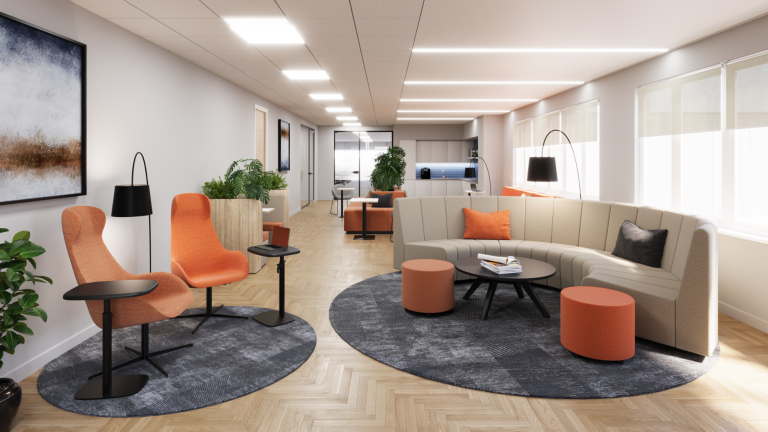The workplace of 2025 is evolving to meet the demands of hybrid working, employee wellbeing, and sustainability, with significant changes in commercial seating and office layouts. Industry trends indicate a move towards more flexible, human-centric designs that foster collaboration, socialisation, and a sense of community among employees.
Collaboration Takes Centre Stage
A growing focus on reconfigurable office spaces is reshaping the modern workplace. Research from the CIPD reveals that employees are typically required to be in the office two to three days a week. While employer mandates play a role, the primary drivers include better connections (57%), improved collaboration (55%), and greater engagement (47%) among employees when working in-person.
To support this shift, organisations are increasingly redesigning spaces to encourage natural, casual interactions. Collaborative zones, rather than traditional hot-desking setups, are becoming the norm. Such areas are designed to nurture spontaneous connections that spark creativity and innovation, boosting team cohesion and productivity.
Flexible Furniture for Dynamic Workspaces
Static office environments are being replaced by adaptable ecosystems that cater to diverse needs. Modular furniture, flexible meeting spaces, and multi-purpose breakout areas allow teams to transform workspaces in real time. Modular seating, for instance, can be quickly rearranged for brainstorming sessions, private discussions, or group meetings.
Casual lounges and social zones further enhance these efforts, encouraging employees to step away from their desks for informal interactions. These spaces are not just functional but also foster a sense of community, aligning with the growing preference for face-to-face collaboration in the workplace.
Designing for the Senses
The psychological and emotional aspects of workplace design are also taking precedence. Organic shapes, warm colours, and textured materials are creating inviting atmospheres. Designers are incorporating soft edges, asymmetry, and layered textures to add depth and character to office spaces.
Maximalist designs, with bold patterns and vibrant hues, contrast with organic shapes inspired by nature, creating environments that feel both dynamic and cosy. These design choices reflect employees’ individuality while promoting creativity and comfort.
Sustainability and Refreshing Spaces
Sustainability is another key consideration. Many organisations are prioritising eco-friendly materials and opting for re-upholstery over replacing furniture. This approach aligns with Corporate Social Responsibility goals while reducing waste. Pre-loved and sustainably sourced seating options are gaining traction in commercial interiors.
Enhancements such as greenery, natural lighting, and occasional feature lighting are also being introduced to improve employee morale and productivity. These thoughtful touches contribute to a more welcoming and inspiring work environment.
A New Workplace Experience
Ultimately, the design trends of 2025 prioritise the employee experience. Offices are becoming places for interaction, networking, and collaboration, while homes remain the preferred choice for focused work. Flexible spaces like open-plan lounges and booths offer versatility, accommodating both formal meetings and casual catch-ups.
With fewer employees in the office at any given time, optimising available space and creating environments that foster connection and engagement will remain critical. The result is a workplace that balances productivity with meaningful social interaction. Explore how UK-based designer and manufacturer Rhubarb Seating is partnering with businesses to reimagine workplace aesthetics and atmosphere for 2025 by visiting their website.


